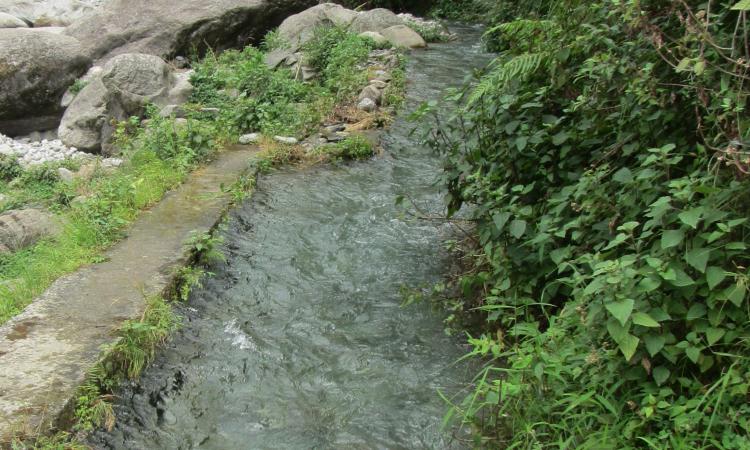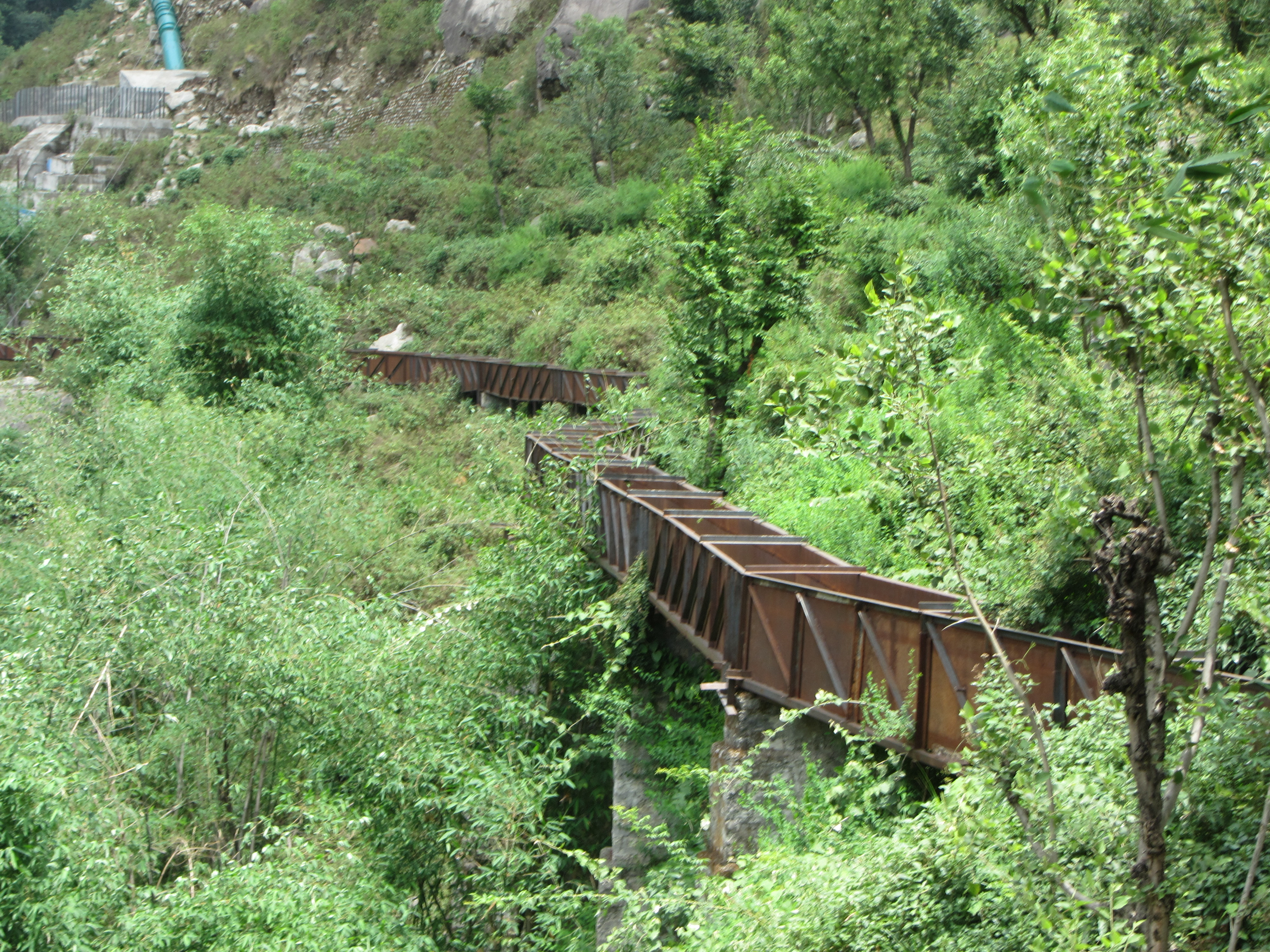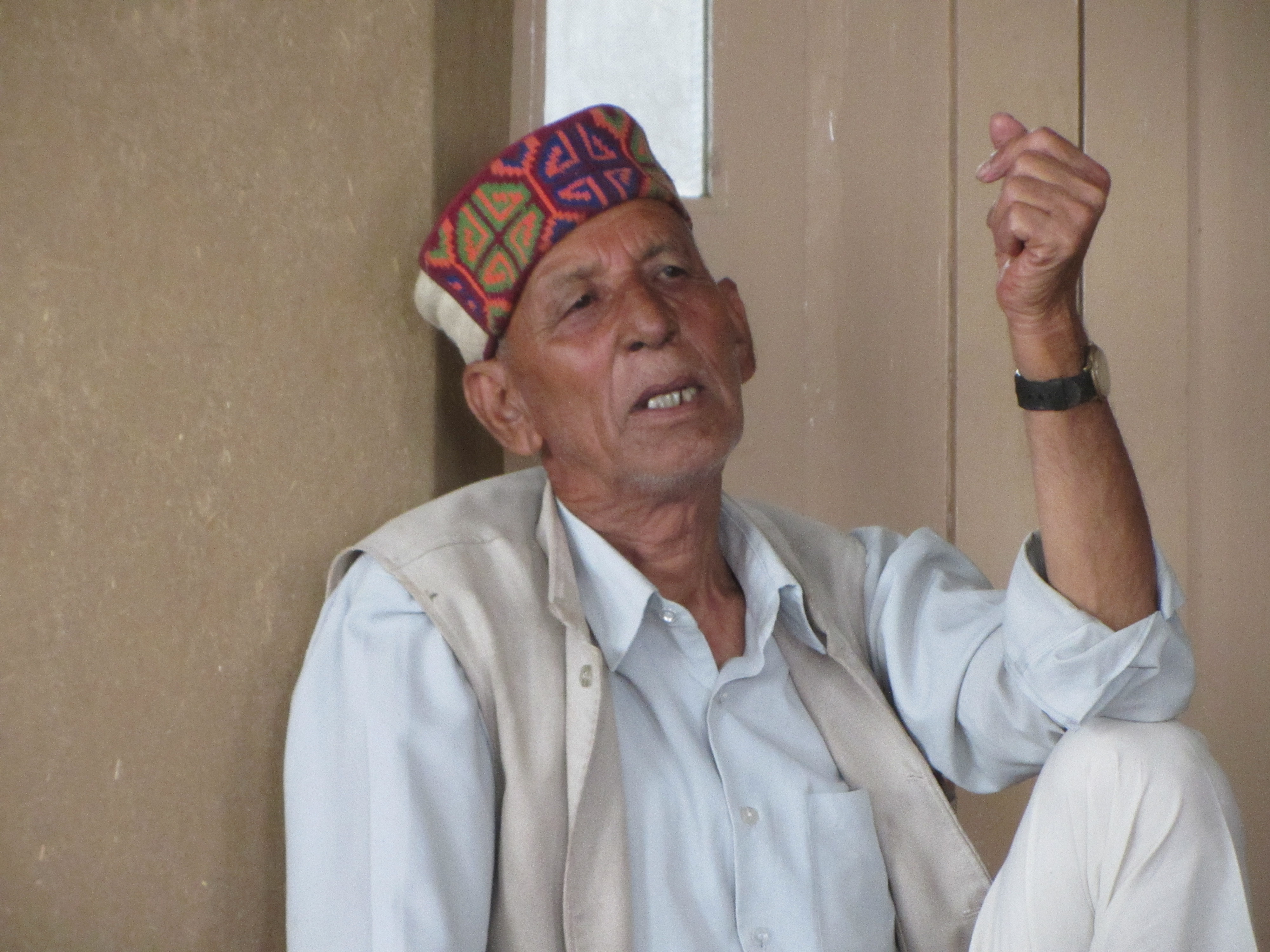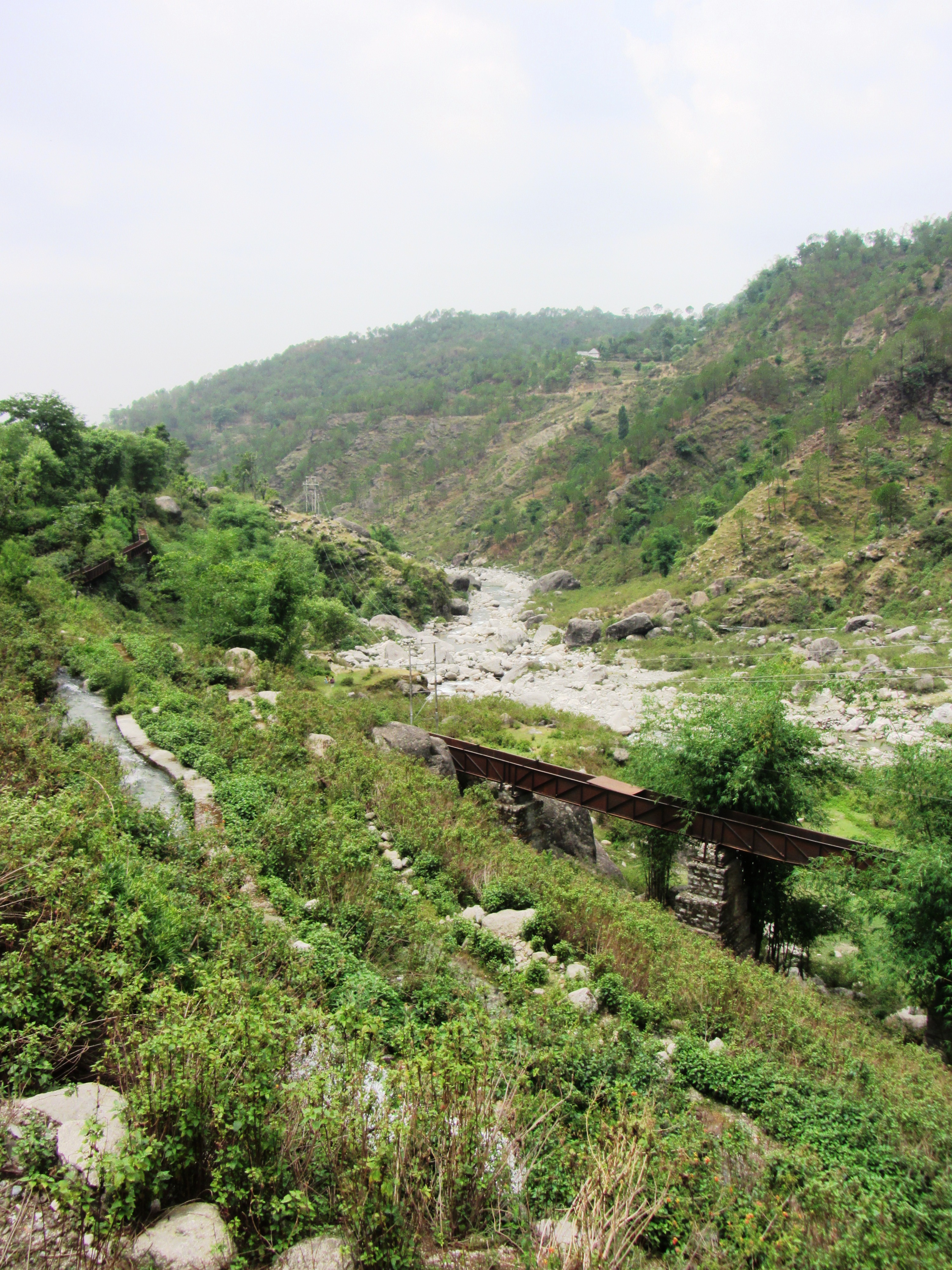
Pro-dam lobby has long praised the small or micro hydropower projects, especially run-of-the-river units as least damaging. But both the developer/s of such projects and the government seem to have overlooked an important aspect: its impact on Kuhls, the traditional irrigation system of Himachal Pradesh.
In this hilly state, people hardly depend on the major rivers for their daily water needs, including irrigation. The remote localities depend on the smaller neighbourhood streams – called the khuds – for their livelihoods. Kuhls, the age old system of diverting water through channels for irrigation – and gharats (traditional water mill) are dependent on these khuds (pronounced as khad). At several places, the kuhls are also the primary source of drinking water.
Kuhls: An introduction
Kuhls are one of the best examples of community managed water governance systems built on the principle of natural gravity-flow hydraulics. A danga diverts the flow of the stream to the channel taken along the natural gravity path to distribute to the landowners downstream. The channel is built using local stones and gravel, needing annual repairs. A Kohli manages the kuhl governance in consultation with the kuhl committee, comprising land owners.
The history of Kuhls
Small and micro projects are necessarily those which do not need an Environmental Impact Assessment. Hence neither the developer nor the government is bothered by any kind of responsibility towards the community dependent on the kuhls except for the required clearance from the Panchayat. Although pre-Colonial documents such as Riwaz-e-Abpashi, which record the rights on a water source, establish the presence of this system prior to 1850s, there is no clarity about the exact age of this traditional system. Kangra district alone has 750 large kuhls and more than 2,100 small kuhls irrigating approximately 40,000 hectares.
Impact of hydropower projetcs
Over the last two decades, Himachal Pradesh has emerged as the hub of hydro-power projects and has hundreds of small and micro projects, some completed and others at various stages of completion, all under Him Urja, the agency for small hydro development programme in the state. These projects are posing a threat to the very existence of kuhls by way of either diverting all water or physically destructing the kuhl structures near the streams.
A case in point is the kuhl system on the Awa khud near Kandbari. Upstream of the  habitation, the project company has made a diversion tunnel, which when operational will divert all the water in the Awa stream according to the locals. Approximately 500 metres downstream is the danga which diverts the water to the kuhl. So, as and when the power generation starts, there will be no water left for this kuhl. There is a power station downstream of this kuhl, where originate two more kuhls. These kuhls will also be out of use once the stream is rendered dry after the project starts.
habitation, the project company has made a diversion tunnel, which when operational will divert all the water in the Awa stream according to the locals. Approximately 500 metres downstream is the danga which diverts the water to the kuhl. So, as and when the power generation starts, there will be no water left for this kuhl. There is a power station downstream of this kuhl, where originate two more kuhls. These kuhls will also be out of use once the stream is rendered dry after the project starts.
After locals raised the issue, the project developer constructed a steel channel that will divert a portion of water thrown out by the turbines. This has meant that the villagers who had three kuhls, will now have to do with only one.
Kohlis' speak up
 One of the kohlis (kuhl manager) Subba Ramji Kohli, 70, has been on the job for almost 30 years. Witness to the modern interventions in the remote hills, Subba Ramji is not exactly in a happy predicament.
One of the kohlis (kuhl manager) Subba Ramji Kohli, 70, has been on the job for almost 30 years. Witness to the modern interventions in the remote hills, Subba Ramji is not exactly in a happy predicament.
Already the land irrigated by the kuhls (kuhli land, against the bagani land, fed by rain) has been reducing year by year. “Only one kuhl means less water. Upstream of this place (Kandbari), the land under kuhl irrigation has seen less variation, but downstream of Dhraman, it has already gone down by 50% since I became a kohli,” Subba Ramji says.
Youngsters don’t want to be farmers and are interested only in government jobs. There was a time when the call for khana – an annual ritual when at least one person each of the family of kuhl beneficiaries gathers for maintaining the kulh structure from its origin to the end – saw a minimum of 50 persons. Now there is no guarantee.
was a time when the call for khana – an annual ritual when at least one person each of the family of kuhl beneficiaries gathers for maintaining the kulh structure from its origin to the end – saw a minimum of 50 persons. Now there is no guarantee.
“Moreover, this new steel channel will only add to our problems. For the first few metres, it stands precariously on pillars, which are liable for any kind of damage in monsoon. Our traditional kuhls are easy to maintain but if anything happens to this new structure, it will be an additional headache to us.”
What Subba Ramji says about traditional kuhls being easy to maintain is possible due to khana. But with a steel channel replacing a portion of it or with what is happening in recent years, it is becoming an increasingly difficult task to maintain these kuhls.
Research on Kuhls
J. Mark Baker from Humboldt State University (USA) carried out a study of socio-ecological impacts of these small run-of-the-river hydro-power projects in 2012 on all 49 commissioned projects. An excerpt of the field research report was published on the SANDRP blog recently. “When a kuhl is damaged or deprived of water, farmers must shift to rainfed cultivation. Output from rainfed crops is invariably much less than for irrigated crops, in part due to unpredictable rainfall, increased vulnerability to drought, and damage from hailstorms at harvest time. Throughout the state, small hydropower projects have disabled at least 13 kuhl irrigation systems; in none of these cases did the project developer compensate farmers for their losses. This level of disturbance to irrigation is significant – for example, one of the disabled kuhls was the primary source of water for approximately 2,000 households”, Baker writes in the blog.
For last few years, the government has started replacing the natural resources built channels of the kuhls by building RCC drains under the Mahatma Gandhi Rural Employment Guarantee Act (MNREGA) scheme. Subba Ramji minces no words in describing the poor quality of this work. “I will rather prefer the traditionally built kuhl. If it is damaged at some point, it is very easy to repair and within no time. If the MNREGA built channels are damaged – and there are ample cases of leaks – nobody will come forward, people will be dependent on the government. And how much time that takes is anybody’s guess,” he asserts.
Can kuhls be saved?
Bhanu Pratap Singh, CEO of Him Urja, says the government has put a condition of leaving out a minimum discharge of 15% of the lean season flow for any hydro project. “While we do have a single window system for clearances, for monitoring, there is a cell in the Directorate of Energy. Even our Pollution Control Board, responsible for environmental issues, has already instructed the power producers to set up equipment at the sites to monitor real time data for minimum 15 % discharge”. Environmentalists have debated this quantum and want it increased to more than 25%.
As Manshi Asher of NGO Himdhara says: “Only those communities who give a tough fight, get some compensation, otherwise the government is not forthcoming".
About the author
Nivedita Khandekar, is a journalist based in Delhi focusing on environmental and developmental issues. She is an avid traveller and photographer, passionate about the Himalayas.
Disclaimer
The views and opinions expressed in this article are those of the author and do not necessarily reflect the policy or position of India Water Portal.